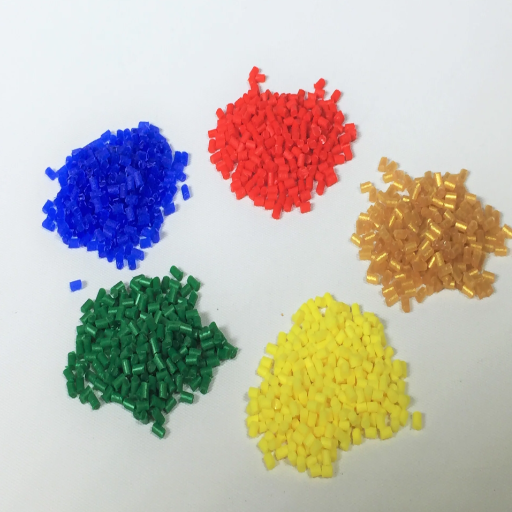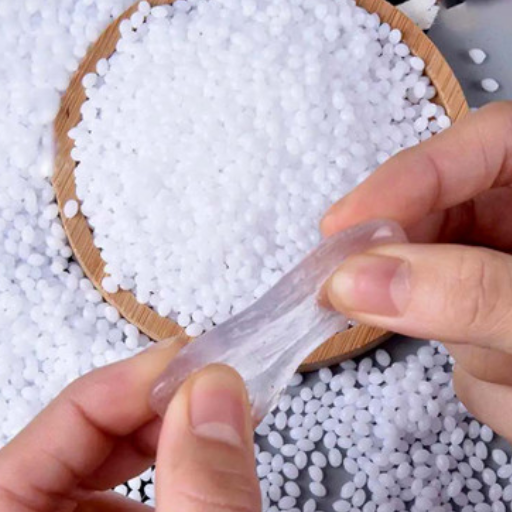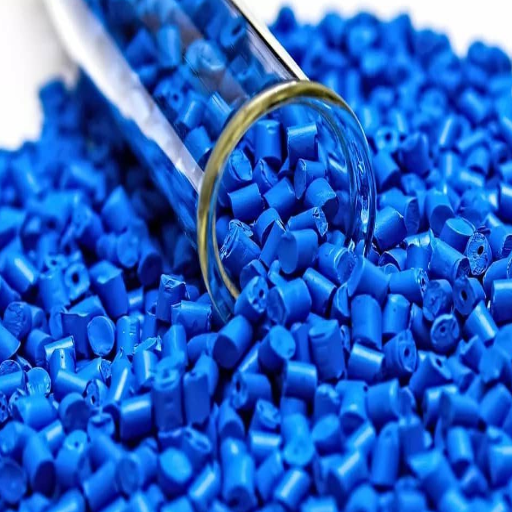In many sectors, the performance of high-performance plastics is exceptional. Their remarkable properties set them apart from standard polymers and help them with several applications. Of note, polyetherimide (PEI) and polyimide (PI) are two of the most popular polymers, each exhibiting unique characteristics that make it suitable for a specific usage. On the other hand, PEI has gained acclaim for its high-temperature performance and easy fabrication, while PI is known for its chemical structure, heat resistance, and high durability. This article outlines them, but these are the essential characteristics of the two polymers – PEI and PI. This article delineates the characteristics and nature of polymers to assist engineers, designers, and polymer manufacturers to make informed decisions regarding polymers. Readers will get to comprehend the type of environment each polymer can withstand in the high-performance environment and the advantages and disadvantages of each polymer.
What are PEI and PI, and how do they differ?
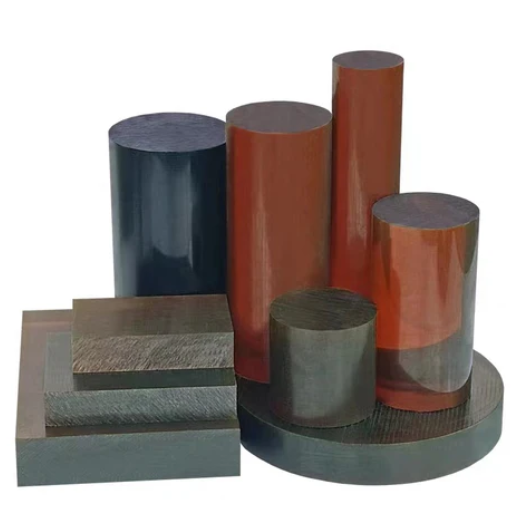
Polyetherimide (PEI) and Polyimide (PI) polymers have significant thermal, mechanical, and chemical resistance. However, they have differing applications. For instance, While PEI is a type of amorphous thermoplastic that finds its best applications in the medical among others, because of ease in its processing and flame retardancy, Polyimides are used in stronger and higher temperature applications such as electronics since polyimides can be found in thermosetting as well as thermoplastic applications. This high thermal resistance, however, comes at a cost of lower manufacturability. The primary difference between the two is that PI will have a higher thermal threshold, which is more challenging to process. In comparison, PEI will have excellent processability with a lower thermal threshold.
Defining PEI (Polyetherimide) and its key characteristics
PEI is one of the highest-performing polymers available today, especially polyetherimide. This was produced with applications in mind, which put all mechanical requirements, such as heat resistance, dimensional stability, and even mechanical properties, to the test. This includes industries such as aerospace, medical, automotive, and electronic, and the list goes on. The material is also endowed with synthetic characteristics, including high strength, stiffness, and flame resistance, which are some key industrial applications. PEI also possesses an impressive glass transition temperature of around 217 degrees Celsius and operates at a broader range of temperatures. Due to its low smoke and inherent chemical resistance emission, this particular polymer is suitable for safer environments. Precision components can be manufactured with many processes machined into them, including extrusion and injection molding.
Understanding PI (Polyimide) and its unique properties
Polyimid’s Thermal stability and mechanical strength allow it to be used across various industries, exposing it to extreme and demanding applications over 500 degrees Fahrenheit. Polyimide provides exceptional chemical resistance to automotive or electronic applications and aerospace applications. It doesn’t just stop there, as polyimide has excellent dielectric strength and is insulated, allowing integration of microelectronics. Polyimide can withstand corrosive chemicals and high-energy radiation for an extended period, making it stand out in demanding conditions. Polyimide is an excellent material for advanced precision controls across various industries, including film, mold, and spray, with multiple forms available.
Comparing the chemical structures of PEI and PI
In terms of structure, polyetherimide (PEI) and polyimide (PI) are entirely different materials, which results in other physical properties and performances of PEI and PI in various applications. PEI is an amorphous thermoplastic with imides and ethers as a side chain. The ether linkages provide less rigidity than the imide polymer backbone and offer excellent ductility and ease of processing. On the other hand, the chemical structure of PI is almost all aromatic, with a very rigid polymeric structure that consists primarily of imide groups attached to aromatic rings. This structural configuration is responsible for much of PI’s excellent thermal stability, chemical resistance, and mechanical properties.
The structural rigidity of polyimide aids in overcoming extreme operating conditions like high temperatures and aggressive chemicals. PEI is thermally less stable than PI but is thermally stable and has electrical properties and ease of fabrication due to the partially sulfur-containing ether polymer backbone. These structural differences, therefore, determine the applications in which PEI and PI would excel and where PEI would be best used in components that require easy fabrication and impact resistance. In contrast, PI would be used in components subjected to high durability requirements like aerospace and microelectronics.
How do the thermal properties of PEI and PI compare?
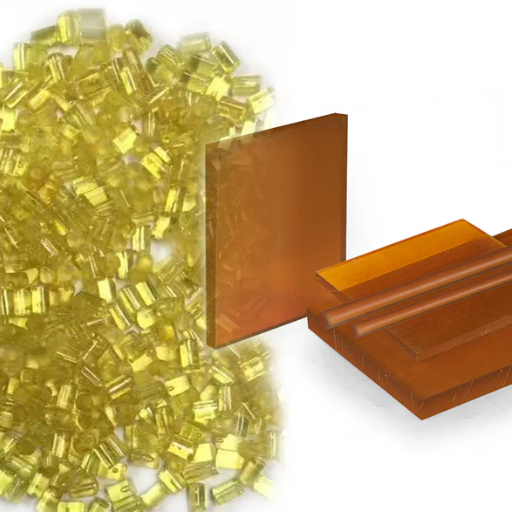
In addition to noting their applications, the properties of Polyetherimide (PEI) and Polyimide (PI) polymers should be distinguished by their thermal characteristics. Rigid polymer PEI is characterized by a glass transition temperature of nearly 215 °C. This lets it be thermally stable enough for harsh conditions but still in a narrower range than the usage of PI. In sharp contrast to PEI, the performance of PI is better since it can withstand temperatures above 400 °C without degradation due to its strong aromatic backbone. This makes these materials applicable in cases where high temperatures are encountered, for instance, for thermal insulation and aerospace components, since they remain effective over prolonged periods).
Heat resistance and glass transition temperature differences
Polymer materials such as polyetherimide (PEI) and polyimide (PI) have to be compared in terms of their thermal resistance and glass transition temperature (Tg). For instance, PEI’s glass transition temperature is usually around 215° C; hence, it applies to sectors requiring moderate heat resistance. However, its functionality can be adversely affected in spaces above this temperature. On the other hand, PI is very different as it has a Tg range that can withstand temperatures as high as over 400 C°, depending on the blend with other polymers. This is because PI has a robust aromatic backbone that is not exceeded by any other polymer under thermal conditions. As a result of this factor, although PEI can work efficiently for electronics and car parts, PI is better off for aeronautics, high-heat electronics, and other areas where remote materials sensors can be used as they do not succumb to high temperatures for a long time with weaker mechanical or chemical strength.
Thermal stability and dimensional stability at high temperatures
Thermal and dimensional stability are product properties that must be noted regarding performance in severe conditions. In my analysis, polyimides (PI) are the most thermally stable materials. Their polymer structure is nearly all aromatic, making them structurally intact and thermally inert for temperatures of 400 °C and higher. In contrast, PEI has good dimensional stability up to a temperature of about 200 °C, but under high temperatures, performance is limited due to creep. Therefore, in environments where high-temperature operating conditions are crucial and must last long, PI takes the lead as it has higher molecular stability and very low thermal expansion, even under stress.
What are the mechanical property differences between PEI and PI?
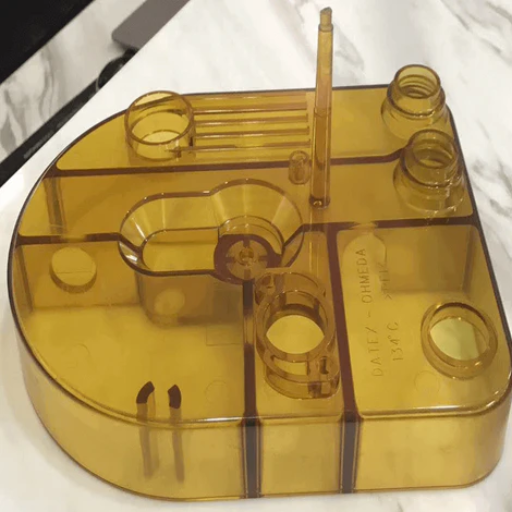
PEI and PI materials, though they share a similar application, possess broad differences concerning mechanical properties, which can be attributed to their structure. PEI is relatively tensile but rigid, allowing it to be used as a load-bearing component. However, PEI’s downside is its propensity to crack under mechanical fatigue over some time. On the contrary, PI is much more challenging than PEI but has the same chemical properties owing to the different structures and the higher flexibility that allows PI to absorb deformation and stress relaxation better under extreme circumstances. This makes PI a desirable choice in high-performance applications requiring a higher mechanical impact resistance and durability for an extended period.
Tensile strength and impact strength comparison
Both polyetherimide (PEI) and polyimide (PI) have demonstrated considerable durability when subjected to strength tests for tensile strength. The mechanical properties of the polyether imide can allow it to be used in structural applications where a tensile stress of between 96 and 170 MPa is induced on the material. In most cases, polyethylene phthalate places higher tensile stress on its components, which enables a broader range of applications on components to be increased and improved as the material has tensile strength within the 110 to 260 Mpa range, which allows for enhanced load-bearing capacity.
Due to its moderate properties, PEI can withstand impact with an Izod impact strength of 60-80 J/m when subjected to periodic stress or low impact, making it suitable for electronic components. On the other hand, polyimide can withstand higher impact, approximately 100 J/m, mainly due to the material’s flexibility. This resilience is essential, especially in critical and high-impact environments. PI provides the structural integrity required under dynamic loading conditions, making it ideal for industries that require components that can withstand sudden and forceful blows.
Wear resistance and long-term mechanical performance.
Regarding wear resistance evaluation, PI has a clear advantage over PEI due to its relatively lower friction coefficient and increased surface durability. This means that PI is better in uses that require mechanical motion or exposure to abrasive environments. From a mechanostability perspective, PI has the best long-term expectation management as it does not easily deform even after being subjected to thermal and mechanical forces for long durations without any maintenance. On the other hand, PEI has moderate wear and withstands damage but does not possess the same advanced durability as PI does under high temperatures and or even a high load.
How do PEI and PI differ in their electrical properties?
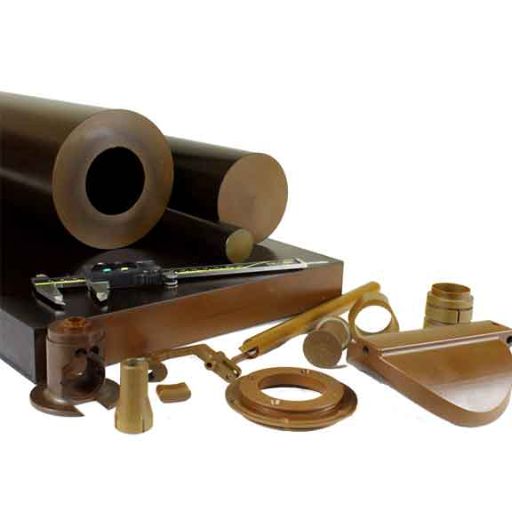
Essentially, each PEI and PI differ significantly in their electrical properties through the nature of their molecular structure. It is noted that PEI provides good dielectric strength and offers electrical insulation, which makes it suitable for low voltage applications such as connectors and insulators. Nonetheless, pi is used for advanced applications where electrical properties are needed owing to its exceptional tensile strength, dielectric properties, higher temperature stability, and anti-flashover properties. It’s worth mentioning that applications for specialized materials that can deliver such properties are best suited in advanced electronics and aerospace sectors, where reliability is a priority.
Insulation capabilities and dielectric strength
Polyimide (PI) is noted for its insulation properties due to the dielectric strength of approximately 150-300 kV/mm, depending on formulation and thickness factors. However, PI’s low dielectric strength rating does not compromise its ability to withstand high voltage and can, with certain limits, always be relied upon to do so. With frequencies for an application that is above the 400 megahertz mark and polyimide being available for use, it is a life-safer as its dielectric constant is around 3.4, which, in simple terms, means PI retains more energy and produces much less interference when used in high-frequency circuits. On the other side, where lack of temperature retains most materials, dull polyimide shines, with an unmatched tendency to keep around 400 – 269 degrees Celsius. Considering the application, the ability mentioned above, coupled with resistance to electrical arcing and the tendency to maintain stability amid high voltages, makes PI an ideal choice of material when looking into advanced electrical circuits, wire insulation, and aerospace components.
Performance in high-frequency applications
Being resistant to high temperatures and high voltages and possessing a low dielectric constant means polyimide (PI) is to be ideally used in modern telecommunication and radar systems. It maintains performance standards amid electrical and thermal stress and low dielectric loss characteristics, making it ideal for telecommunication and high-frequency usage. Adding on, due to the availability and assurance of performance across such a wide range of frequencies, the polymer is excellent for usage across several engineering projects, allowing engineers to take liberty when developing new high-frequency technology and devices.
What are the processing differences between PEI and PI?
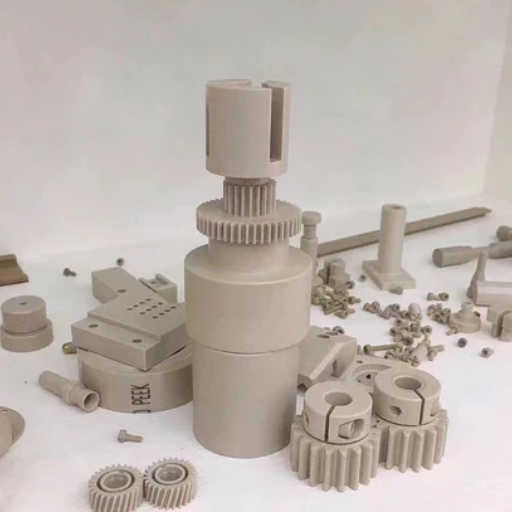
The processing methods of Polyetherimide (PEI) and Polyimide (PI) thermoplastics differ due to the concerns of their thermal characteristics and chemical structures. Typically, PEI remains an amorphous thermoplastic at room temperature, allowing it to undergo processes such as injection molding, extrusion, and thermoforming. This is due to its glass transition temperature (Tg), which is reported to be between 215 – 220 °C. In contrast, PI is a thermoset material and thus requires a two-step process for molding. First, polyamic acid precursors must be oxidized, which can be accomplished either thermally or chemically.
Furthermore, owing to its high decomposition temperature (500 °C on average), PI can be utilized in applications requiring high thermal stability but at the cost of efficiency in recycling and reshaping the material. Therefore, these differences in the processes make PEI a more efficient option for polymer-containing products that require extensive manufacturing and processing applications due to its versatility. At the same time, PI is ideal for high-performance electrical and thermal applications.
Injection molding capabilities of PEI vs PI
Molding is one of the most widely practiced forming processes for manufacturing precise, repeatable, and scalable parts. Polyetherimide has low processing temperatures, so it possesses reinforced flow qualities, enhancing its ability to be injected in molding. As PEI works best in the 340-400 degrees, molding more complex shapes is possible. Its self-dimensional stability and minimum shrinkage make it ideally suited for parts in the aerospace, automotive, and medical industries,s which are made of relatively simple shapes.
On the contrary, polyimide poses a threat in molding applications due to its high decomposition temperature (exceeds 500 degrees). Polyimide is perhaps the thickest insulation and performs excellently in extreme conditions, yet its very high melting point deters standard injection molding. PI is often produced using powder sintering, where compression and resin infusion bypasses the high melting temperature hurdle. Therefore, while PEI is easily mass-produced and allows for a range of design options, PI is specialized for high electrical and heat applications, which simple molding cannot achieve, and therefore, PEI is not utilized.
Thermoset nature of PI vs thermoplastic nature of PEI
PI and PEI fall under the category of polymers and have distinct characteristics. They have a different chemical composition and, therefore, different manufacturing techniques. Advancing the UC composition of X or Y leads to these distinct structural attributes. He also added that thermosetting differs from thermoplastics to prove this statement. In simple words, PEI is incapable of being dampened. However, PEI has more incredible practical applications and can withstand damping over time. This makes PEI worthwhile in numerous business settings, whereas PI is best suited for more advanced applications.
How do PEI and PI compare in terms of chemical resistance?
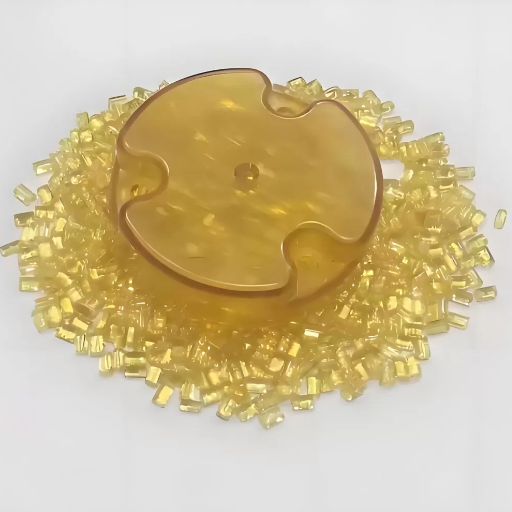
Wearable electronics require smart polymers that withstand harsh environments while providing excellent conductivity and stretchability. Electronic polymers are positioned to be the norm of modern wearable electronics. Polyetherimides, commonly called PEI and Polyimide (PI), are widely used for their high performance. Apart from being durable, these polymers have excellent chemical resistance, making them suited for harsh environments. However, not all chemical resistances are similar. According to Wang and Tanaka, both PEI and PI show considerable strength; however, PI outperforms PEI in high-temperature environments while retaining lower disadvantages while also enhancing the thermal stability having high decomposition temperature. This suggests that PI is more suited to be used in environments exposed to aggressive chemicals, unlike PEI, which is more suited to less aggressive environments while maintaining good chemical resistance.
Solvent resistance and hydrocarbon exposure performance
Polyimide (PI), in the presence of significant amounts of organic solvents, including hydrocarbons, ketones, and ethers, has a large degree of chemical stability. When evaluating performance relating to solvent resistance and hydrocarbon exposure, it can be stated that PI performance is superior. The reason for this is the presence of a very cross-linked and aromatic chemical structure of the polymer, which significantly limits molecular interaction with aggressive solvents. On the other hand, polyetherimide (PEI) has reasonable resistance to hydrocarbons and standard solvents but not to solvent systems containing aggressive chemicals used for prolonged times. Semi-aromatic PEI retains some strength in moderate hydrocarbon surroundings and thus can be employed where severe chemical stability is not required. The choice of application between PI and PEI is essential, and it relates to how much, how long, and how harsh the anticipated solvent will be.
Resistance to corrosion and aggressive chemicals
Concerning corrosion, harsh environmental conditions, and aggressive chemicals, PEI and PI can work under these ecological situations, although their effectiveness differs depending on the situation. However, PI is superior in that it can withstand highly aggressive and extreme enforcement situations, making it ideal to last under extreme chemical conditions. Slightly to the contrary, PEI, although stern rather best suited for moderate conditions, offers excellent protection against harsh and unyielding solvents, but not as much as PI. In conclusion, it largely depends on the conditions of the environment and how long we want that performance under those conditions to last.
What are the flame-retardant properties of PEI and PI?
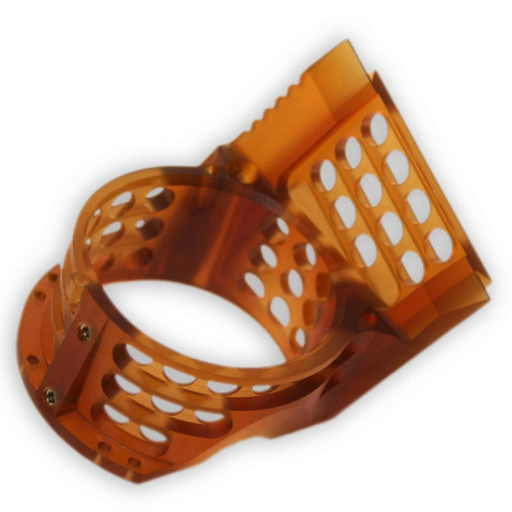
While PEI and PI are great options for applications that require excellent flame retardant, the intelligent design concept is needed for applications that require a high safety standard in places prone to fire. PEI, on its own, is flame resistant due to its high limiting oxygen index (LOI), estimated to be about 47, meaning that it is hard to catch fire as a lot of oxygen is needed to sustain a flame. Furthermore, PI is known to be one of the most thermally stable polymers, which can resist temperatures of over 400 degrees Celsius. In addition to this, it also possesses excellent fire resistance due to its high LOI value, which is over 50. Although both can comply with strict guidelines such as outstanding flame fire protection, PI has performed better under extreme thermal conditions.
Flame resistance and low smoke characteristics
Flame-resistant materials are essential in contexts that require a significant safety factor since they prevent ignition and the spread of flames. Polymers like polyimide (PI) and polyphenylene sulfide (PPS) are remarkable in this field. PI is highly flame resistant due to its high thermal stability and low flammability. This is shown in the Limiting Oxygen Index (LOI), which measures oxygen combustion thresholds. This property reduces the capacity of the material to aid in combustion without the aid of oxygen from the environment.
Also of great importance are the low smoke properties of these materials, as they help to improve visibility and decrease toxicity levels during a fire. While some other polymers can produce dangerously large volumes of smoke, PI emits a much lower volume of smoke and hazardous by-products when subjected to high temperatures. PPS has also good flame retardancy and low smoke generation, thus both materials are helpful in critical industries such as aerospace, electronics and transportation where fire protection and air quality is vital. All their properties ensure they perform consistently in high and low-temperature environments without failing to adhere to international fire codes and standards.
Oxygen index and self-extinguishing properties
The oxygen index is a significant criterion for determining the minimum volumetric ratio of oxygen present in the atmosphere for the combustion of any given material. Oxygen index values for PPS (polyphenylene sulfide) and PBT (polybutylene terephthalate) are relatively high, explaining their elemental flammability resistance. These materials are considered self-extinguished materials because the combustion will stop when the source of ignition is taken away, which meets high fire safety standards in well-controlled environments. In some cases, their flame retardant characteristics are enhanced with additives to ensure full compliance with safety regulations.
References
Frequently Asked Questions (FAQ)
Q: What is polyetherimide (PEI), and how does it differ from polyimide (PI)?
A: Polyetherimide (PEI) is a high-performance amorphous thermoplastic polymer, while polyimide (PI) is a thermoset plastic. PEI offers excellent mechanical properties, high temperature, and chemical resistance. The main difference is that PEI can be melted and reshaped, whereas PI cannot. Both are used in demanding applications, but PEI is more versatile due to its thermoplastic nature.
Q: What are the key characteristics of PEI as a high-performance plastic?
A: PEI is known for its high strength, excellent thermal stability, flame retardancy, and good chemical resistance. It also has a high dielectric strength, making it suitable for electrical insulation. PEI maintains its properties at elevated temperatures, has good dimensional stability, and can be reinforced with glass or carbon fiber for enhanced performance.
Q: How does the temperature resistance of PEI compare to other engineering plastics?
A: PEI has exceptional high-temperature resistance compared to many other engineering plastics. It can withstand continuous use temperatures up to 170°C (338°F) and short-term exposure to even higher temperatures. This makes it suitable for applications where other plastics might fail, such as in the aerospace, automotive, and electronics industries.
Q: What are some typical applications for PEI material?
A: PEI is used in various applications due to its high-performance characteristics. It’s commonly used in aerospace components, automotive parts, electrical connectors, circuit boards, medical devices, and food processing equipment. PEI is also used for machined parts in industries requiring high strength, heat resistance, and dimensional stability.
Q: How does the mechanical strength of PEI compare to other high-performance plastics?
A: PEI offers excellent mechanical properties, including high tensile strength and stiffness. It outperforms many other high-performance plastics in terms of mechanical strength, especially at elevated temperatures. This makes PEI an ideal choice for structural components in demanding environments where strength and heat resistance are crucial.
Q: What is Ultem, and how is it related to PEI?
A: Ultem is a brand name for polyetherimide (PEI) resin produced by SABIC. It’s one of the most well-known commercial grades of PEI. Ultem is renowned for its high performance in various applications and is often used as a synonym for PEI in industry discussions. It offers the same thermal, mechanical, and electrical properties as PEI materials.
Q: Can PEI be used in medical applications?
A: PEI is widely used in medical applications due to its excellent properties. It can withstand various sterilization methods, has good biocompatibility, and maintains strength and dimensional stability in medical environments. PEI is used in surgical instruments, medical device housings, and various healthcare equipment where high performance and safety are critical.
Q: How does the chemical structure of PEI contribute to its properties?
A: PEI’s chemical structure, which includes aromatic imide groups in its backbone, contributes significantly to its properties. These imide groups provide thermal stability and mechanical strength, while the ether linkages offer flexibility. This unique structure results in a polymer with a good balance of properties, including high-temperature resistance, mechanical strength, and processability, making it suitable for various applications.

